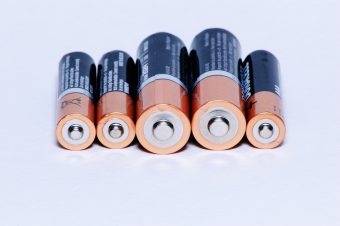
The large amounts of waste we create affect the emergence and expansion of landfills, which leaves a strong negative impact on the environment. Landfills occupy large areas of land, rubbish is deposited in such places for years, and its composition consists of all types of waste, from municipal and medical to hazardous waste.
Currently, in addition to sporadic recycling places, which number is insufficient, almost all hazardous waste ends up in landfills and illegal dumps, where it decomposes, releasing huge amounts of harmful chemical substances that penetrate the Earth’s crust. We talked about waste management, recycling and ways to overcome numerous problems in this area with Tamara Spasenović, regulatory reform associate at NALED.
EP: What can you tell us about the Increasing the Recycling Rate for Batteries and Light Bulbs project?
Tamara Spasenović: We launched this project to shed light on the problem of these waste streams, while pointing out the shortcomings of the existing legal regulations and, through piloting the system, showing that a separate collection of waste batteries and light bulbs is possible. For this reason, and in addition to the comprehensive analysis of the situation that we carried out and recommendations for improving the legislative framework, we successfully established cooperation with the line institutions in Belgrade and Kragujevac.
The project officially lasts until December of this year. For the next period, along with the continuous collection of batteries and light bulbs, the plan is to carry out an analysis of the collected quantities so that, based on the data, we gain additional recommendations for further solving the issue of hazardous waste flows.
Also, an important aspect of the project is educating both school-age children and adults.
IN FOCUS:
- SCOBY — INSPIRATION IN A GLASS OF KOMBUCHA
- WORKING DAILY IN PEOPLE’S BEST INTERESTS AND PRESERVING THE ENVIRONMENT
- WASTEWATER TREATMENT AND PRESERVATION OF FRESH WATER SOURCES
EP: How are used batteries and light bulbs managed in our country?
Tamara Spasenović: Currently, our country doesn’t have an adequate systemic solution for collecting, disposing and recycling of batteries. Only one company operating in the Republic of Serbia collects and stores batteries and then exports them to Germany for treatment. The main reason for the non-existence of a collection network for this waste stream is the lack of state incentives, which would motivate the largest generators of hazardous waste to hand over used batteries to the system operator. With the support of incentives, they can dispose of those quantities and treat them adequately.

Regarding light bulbs, the situation is somewhat better because there are state financial incentives in place, as well as a facility for recycling and processing used light bulbs in the Republic of Serbia. The problem lies in the fact that the recycling centre for light bulbs. However, it is completely equipped with the latest technology, does not have a sufficiently developed collection network, and therefore not enough quantities that it could dispose of and treat (the facility also has the capacity to treat imported waste light bulbs too).
In addition to the lack of incentives, a recycling centre for batteries and an underdeveloped collection network, it is necessary to boost and systematically organize the opening of recycling yards additionally. Plus we need more containers and bins, as well as have stations we can direct people to, who are also interested in this topic. Furthermore, there is a need for continuous campaigning and education, starting from an early age.
EP: How can we increase the recycling rate in our country?
Tamara Spasenović: To increase the recycling rate in the entire country, we must first analyze the current situation in terms of different types and streams of waste, so that we can identify the key problems for each of them. We have already done this for food waste and hazardous waste streams (batteries and light bulbs, electrical and electronic waste). An initiative to solve the issue of packaging waste will soon be launched. By analyzing the current situation, and through cooperation with experts from the mentioned fields, companies, citizens and, as well as by using previously acquired experiences, we have identified key shortcomings in these areas, based on which we were able to offer proposals for adequate solutions.
Different waste streams carry different problems and require different approaches and solutions, but they all have one common denominator — the lack of a systemic solution. One of the ways to solve the issue of special waste streams to establish a collective operator based on the model that works for packaging, which would be an incomparably less burdensome model for the state, administration-wise. In this way, the rate of fee evasion would be reduced, the administration would be freed from the burden of issuing a large number of decrees, and the relevant inspection would focus on the work of the system operator.
Interviewed by: Milica Radičević
Read the story in the new issue of the Energy portal Magazine Waste Management.


